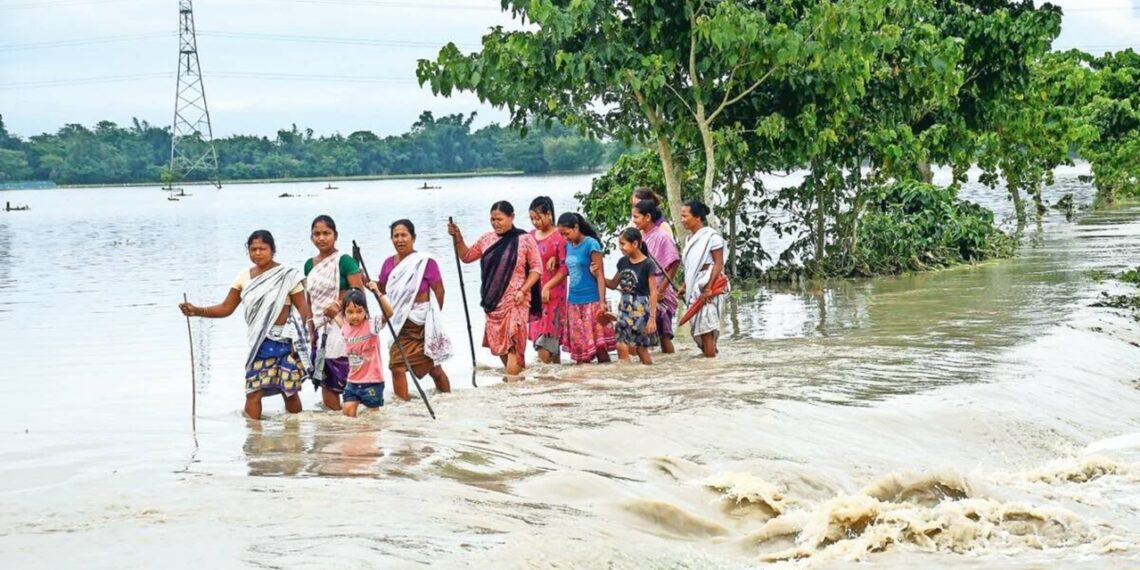GUWAHATI: Assam continues to battle severe floods with more than 400,000 people affected across 19 districts and the death toll climbing to 36 due to floods, landslides, and storms, reports said on Friday.
The Assam State Disaster Management Authority (ASDMA) confirmed that one person drowned in the Khairabari area of Udalguri district on Thursday, adding to the tragic fatalities caused by this year’s natural disasters.
Chief Minister Himanta Biswa Sarma, while in Tezpur on Thursday, acknowledged the gravity of the flood situation, highlighting that several tributaries of the Brahmaputra River are flowing above danger levels.
“Brahmaputra itself has not breached the danger mark yet. The central government is enquiring about the situation, but we have not sought any assistance yet. We have sufficient funds with us,” he told a national news agency.
ALSO READ Assam floods worsens: Over 1.04 L affected across 14 districts, death toll reaches 35
Major rivers such as Kopili, Barak, and Kushiyara are reported to be flowing above danger levels, worsening the flood situation in affected districts including Bajali, Baksa, Barpeta, Biswanath, Cachar, Darrang, Goalpara, Hailakandi, Hojai, Kamrup, Karimganj, Kokrajhar, Lakhimpur, Nagaon, Nalbari, Sonitpur, South Salmara, Tamulpur, and Udalguri.
In response to the crisis, the ASDMA has been actively providing relief, distributing essentials such as rice, dal, salt, and mustard oil to those affected.
Currently, 1,311 villages remain submerged, and 6,424.83 hectares of crop areas have been damaged.
With incessant rainfall persisting, the Meteorological Department has forecasted light to moderate rain across Assam, with thunderstorms, lightning, and heavy downpours expected in isolated areas over the next few days.
Karimganj district remains the most severely impacted, affecting over 250,000 people, followed by Darrang and Tamulpur.
More than 100 relief camps have been set up, accommodating over 14,000 affected individuals seeking shelter.
The floodwaters have also caused significant damage to embankments, roads, and bridges in several districts, compounding the challenges faced by local authorities in managing the disaster effectively.















